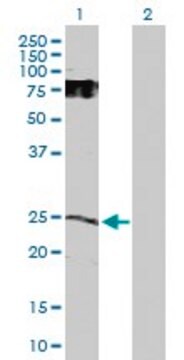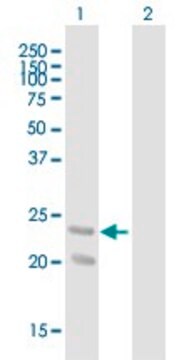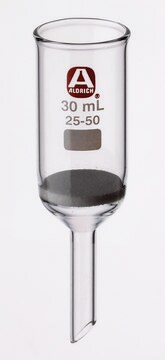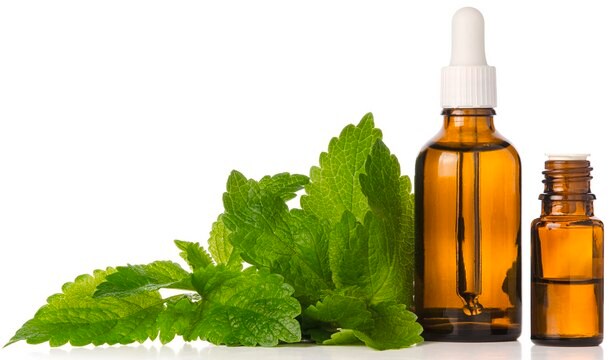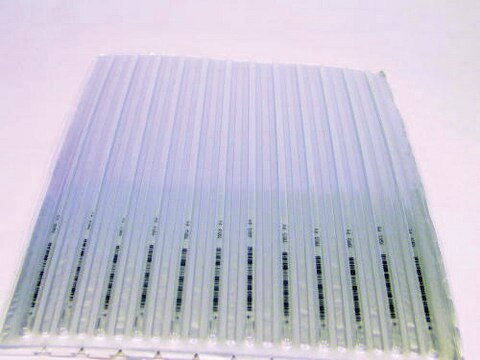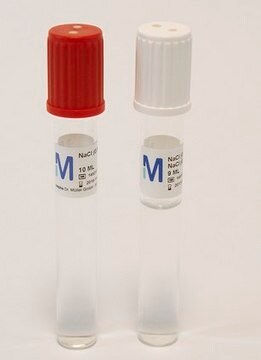AB5252P
Anti-Glial Derived Neurotrophic Factor Antibody
Chemicon®, from sheep
Synonim(y):
GDNF
About This Item
Polecane produkty
pochodzenie biologiczne
sheep
Poziom jakości
forma przeciwciała
affinity purified immunoglobulin
rodzaj przeciwciała
primary antibodies
klon
polyclonal
oczyszczone przez
affinity chromatography
reaktywność gatunkowa
human, rat, mouse
producent / nazwa handlowa
Chemicon®
metody
immunohistochemistry: suitable
numer dostępu NCBI
numer dostępu UniProt
Warunki transportu
dry ice
docelowa modyfikacja potranslacyjna
unmodified
informacje o genach
human ... GDNF(2668)
Zastosowanie
Immunoblotting: 1 μg/mL using TBS (not PBS) and blocking is best performed with IgG free BSA highest quality. Antibody recognizes ~75 kDa band in non-acid-treated serum samples corresponding to the GDNF/GDNFR complex. When samples are acid treated, a prominent 32 kDa (dimer) and weaker 16 kDa monomer are observed. Acid treatment: homogenized tissue samples in PBS are acid-treated by adding 1N HCL until the pH is less than 3.0 (pH paper strips), incubated 15 minutes at room temperature and then neutralized by adding 1N NaOH to pH 7.6.
Optimal working dilutions must be determined by end user.
Postać fizyczna
Informacje prawne
Nie możesz znaleźć właściwego produktu?
Wypróbuj nasz Narzędzie selektora produktów.
Zwroty wskazujące rodzaj zagrożenia
Zwroty wskazujące środki ostrożności
Klasyfikacja zagrożeń
Aquatic Chronic 3
Kod klasy składowania
11 - Combustible Solids
Klasa zagrożenia wodnego (WGK)
WGK 3
Certyfikaty analizy (CoA)
Poszukaj Certyfikaty analizy (CoA), wpisując numer partii/serii produktów. Numery serii i partii można znaleźć na etykiecie produktu po słowach „seria” lub „partia”.
Masz już ten produkt?
Dokumenty związane z niedawno zakupionymi produktami zostały zamieszczone w Bibliotece dokumentów.
Nasz zespół naukowców ma doświadczenie we wszystkich obszarach badań, w tym w naukach przyrodniczych, materiałoznawstwie, syntezie chemicznej, chromatografii, analityce i wielu innych dziedzinach.
Skontaktuj się z zespołem ds. pomocy technicznej
